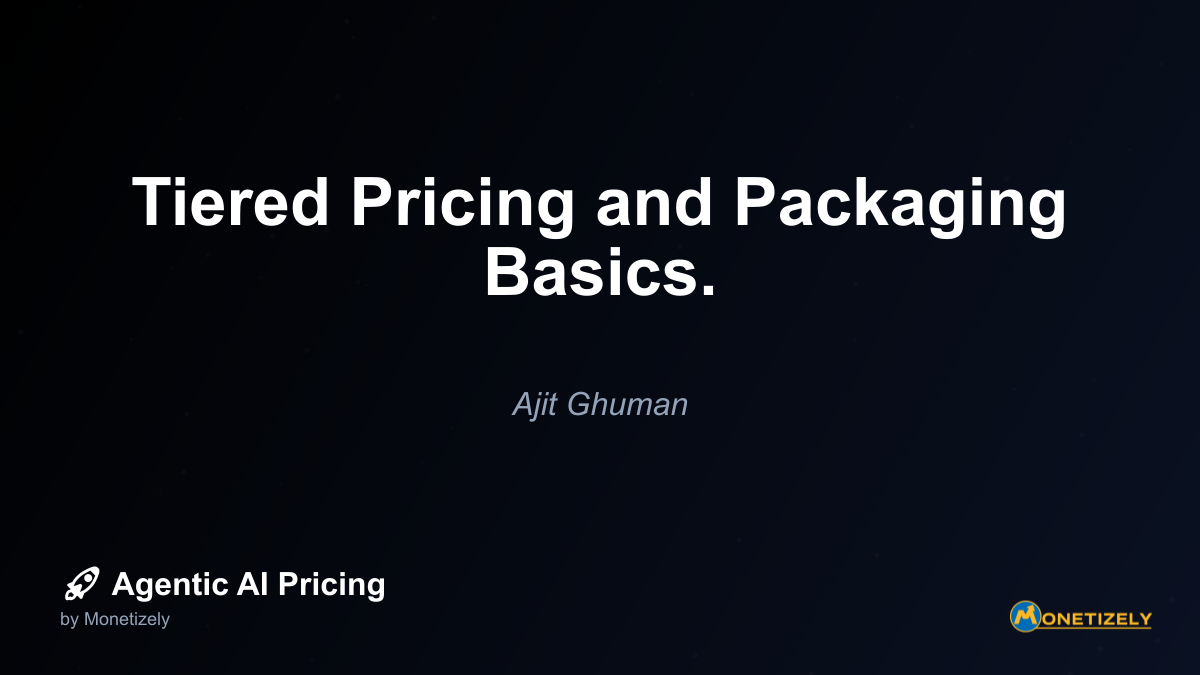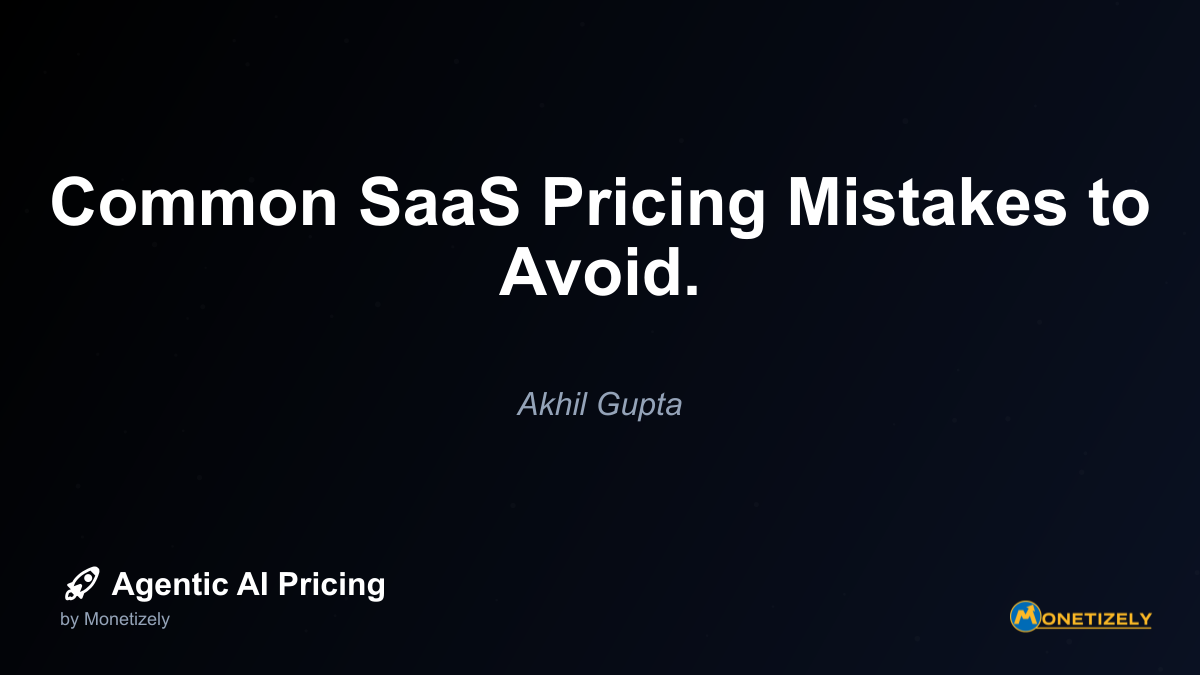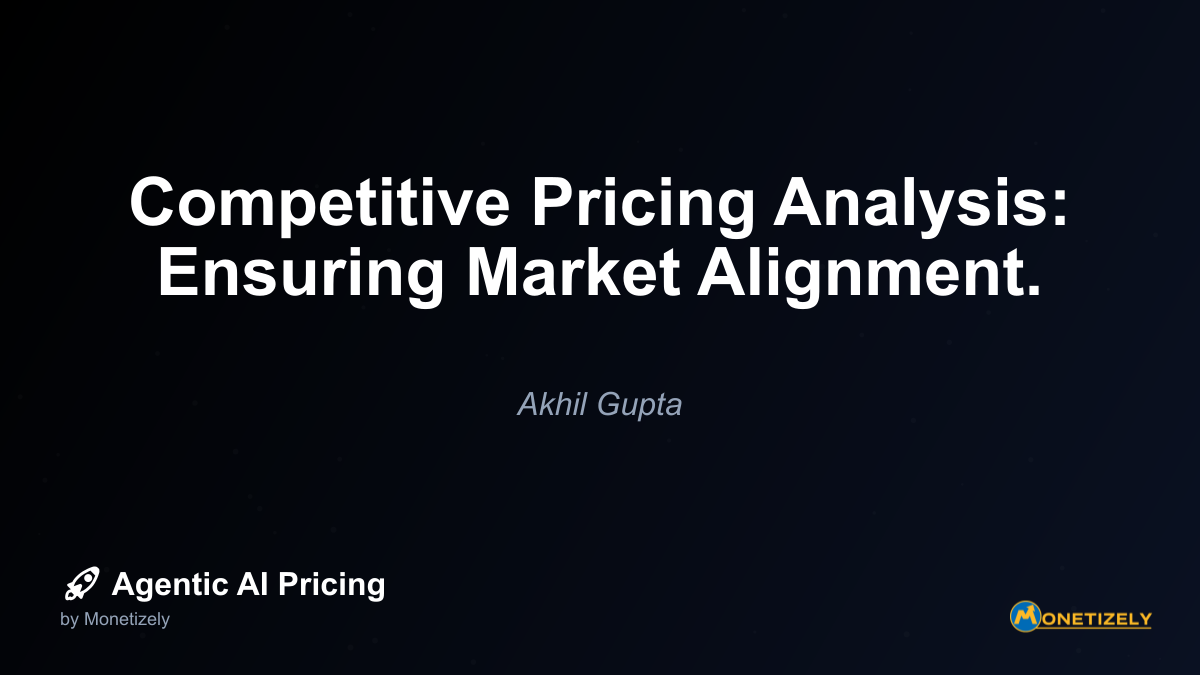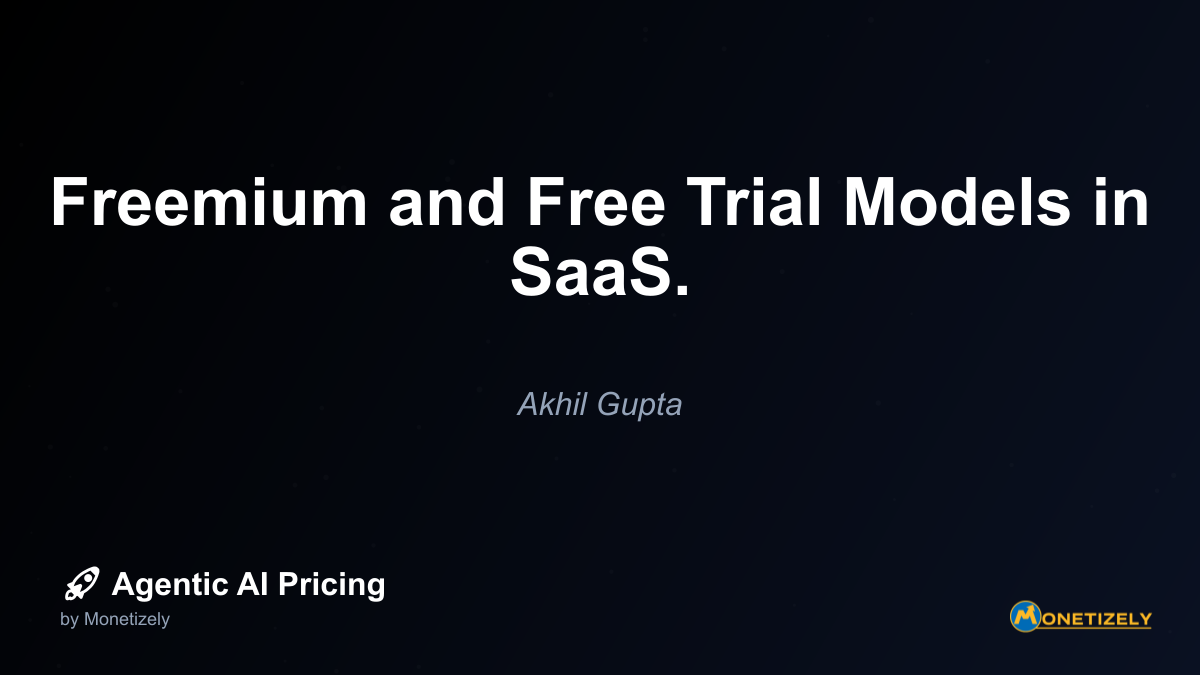· Ajit Ghuman · Pricing Fundamentals · 11 min read
Tiered Pricing and Packaging Basics.
AI and SaaS Pricing Masterclass
Learn the art of strategic pricing directly from industry experts. Our comprehensive course provides frameworks and methodologies for optimizing your pricing strategy in the evolving AI landscape. Earn a professional certification that can be imported directly to your LinkedIn profile.

Tiered pricing has become a cornerstone strategy for SaaS businesses looking to maximize revenue while providing appropriate value to different customer segments. By strategically organizing features and capabilities into distinct packages at varying price points, companies can effectively cater to diverse customer needs, create natural upgrade paths, and optimize their revenue potential. This approach to pricing isn’t simply about offering different price tags—it’s about thoughtful segmentation and value alignment that benefits both the provider and the customer.
The Fundamentals of Tiered Pricing
At its core, tiered pricing involves creating multiple product or service packages at different price points, each designed to appeal to specific customer segments. Typically structured as “Good, Better, Best” or “Basic, Pro, Enterprise,” these tiers allow companies to serve a wider market range than a one-size-fits-all approach.
The tiered pricing model operates on several key principles:
Value-based differentiation: Each tier offers a distinct value proposition aligned with specific customer needs.
Progressive feature inclusion: Higher tiers include all features from lower tiers plus additional capabilities.
Scaling usage limits: Tiers often increase allowances for usage metrics (users, storage, API calls, etc.).
Price anchoring: The presence of multiple options creates reference points that influence purchasing decisions.
Clear upgrade paths: As customer needs evolve, the path to more comprehensive solutions is clearly defined.
For agentic AI applications, tiered pricing becomes particularly relevant as organizations can segment access to AI capabilities based on sophistication, computational requirements, and business criticality.
Why Companies Adopt Tiered Pricing Structures
The widespread adoption of tiered pricing across SaaS and AI industries stems from several compelling benefits:
Market Coverage and Revenue Optimization
Tiered pricing enables companies to serve multiple market segments simultaneously. Rather than setting a single price point that might be too high for some potential customers and leave money on the table from others, tiers allow for capturing value across the spectrum.
For example, a customer relationship management (CRM) platform might offer:
- A basic tier for small businesses with limited contact management needs
- A professional tier for growing companies requiring automation and integration
- An enterprise tier for large organizations needing advanced analytics and dedicated support
This approach ensures that price-sensitive customers have an entry point while allowing the company to capture additional revenue from customers with greater needs or willingness to pay.
Customer Segmentation and Targeting
Different customer segments have varying needs, budgets, and value perceptions. Tiered pricing provides a framework for addressing these differences systematically.
For agentic AI platforms, segmentation might consider:
- Scale of implementation: Individual users vs. department-wide vs. enterprise-wide deployment
- Complexity of use cases: Basic automation vs. complex decision-making support
- Integration requirements: Standalone operation vs. deep integration with existing systems
- Performance needs: Standard processing vs. priority computing resources
By aligning tiers with these segmentation factors, companies can speak directly to the needs of distinct customer groups.
Creating Upgrade Paths and Expansion Revenue
Perhaps one of the most valuable aspects of tiered pricing is how it facilitates customer growth over time. As customers experience success with a product at one tier, they naturally consider upgrading when:
- They outgrow usage limits
- They require additional features
- Their business complexity increases
- They seek to unlock additional value
This creates a natural path for expansion revenue, which is often more cost-effective than acquiring new customers. For SaaS businesses, this aligns perfectly with the “land and expand” growth strategy, where initial adoption at a lower tier serves as the foundation for future revenue growth.
Key Components of Effective Tier Design
Creating successful pricing tiers involves careful consideration of several components:
Feature Differentiation and Packaging
The art of tier design lies in determining which features belong in which packages. This requires understanding:
Must-have vs. nice-to-have features: Core functionality should appear in lower tiers, while specialized capabilities can be reserved for higher tiers.
Value perception: Features should be grouped in ways that create clear value jumps between tiers.
Implementation complexity: Features requiring significant onboarding or support may be better suited for higher tiers with appropriate pricing.
Competitive positioning: Feature allocation should consider industry standards and competitive offerings.
For agentic AI services, lower tiers might include basic automation and standard models, while higher tiers could offer customizable AI agents, advanced training capabilities, or specialized vertical-specific functionalities.
Usage Limits and Scaling Factors
Beyond feature differences, tiers typically vary in usage allowances. Common scaling factors include:
- User seats: Number of individual users allowed
- Storage capacity: Data storage limits
- Transaction volume: Number of operations performed
- API calls: Limits on programmatic interactions
- Compute resources: Processing power or training capacity
For AI applications specifically, limits might include:
- Inference requests: Number of AI model queries
- Training hours: Time allowed for model customization
- Agent deployment: Number of concurrent AI agents
- Data processing volume: Amount of information processed
These scaling factors should align with actual usage patterns and value derived. For instance, if additional users directly correlate with more business value, user-based scaling makes sense as a tier differentiator.
Price Points and Value Alignment
Setting price points for each tier requires balancing multiple considerations:
Value delivered: Pricing should reflect the tangible and intangible benefits customers receive.
Willingness to pay: Different segments have different price sensitivities and budget constraints.
Cost to serve: Higher tiers often include more resource-intensive features or support.
Competitive landscape: Pricing should be positioned strategically against alternatives.
Psychological pricing: Price points often leverage psychological thresholds and perception.
The relative pricing between tiers also matters. A common approach is to create meaningful jumps between tiers (often 2-3x increases) to signal significant value differences while maintaining reasonable step-ups for customers considering upgrades.
Common Tiered Pricing Structures
While tiered pricing follows general principles, several distinct structures have emerged:
Feature-Based Tiers
This approach differentiates primarily based on functionality, with each tier unlocking additional capabilities. Feature-based tiers work well when:
- Different customer segments have clearly different functional needs
- Features have obvious value differentiation
- The product has a wide range of capabilities that can be logically grouped
For example, an email marketing platform might offer basic email campaigns in its entry tier, add automation sequences in its mid-tier, and include advanced personalization and AI-driven optimization in its premium tier.
Usage-Based Tiers
These tiers primarily differentiate based on usage allowances rather than features. Usage-based tiers are effective when:
- Core functionality is valuable to all segments
- Usage volume correlates directly with value received
- Different segments have predictably different usage needs
Cloud storage services often follow this model, offering the same core functionality but with different storage limits at each tier.
Hybrid Tiers (Feature + Usage)
Most sophisticated tiered pricing combines both feature differentiation and usage limits. This approach:
- Creates multiple dimensions of value differentiation
- Allows for more precise targeting of segments
- Provides multiple upgrade triggers (feature needs or usage growth)
Enterprise software platforms typically employ hybrid tiering, combining functional capabilities with user limits, storage allocations, and other usage parameters.
Value-Metric Tiers
Some companies base their tiers on outcomes or value metrics rather than inputs like features or usage. For example:
- A marketing platform might tier based on lead volume
- A payment processor might tier based on transaction value
- An AI solution might tier based on efficiency gains or cost savings
This approach directly ties pricing to customer value, though it can be more complex to implement and communicate.
Best Practices for Implementing Tiered Pricing
Creating effective tiers requires thoughtful planning and execution:
Conduct Thorough Customer Research
Successful tier design starts with deep customer understanding:
- Interview existing customers about their needs, usage patterns, and value perception
- Analyze usage data to identify natural breakpoints and patterns
- Study competitors to understand market expectations
- Test pricing concepts with target segments
This research helps identify which features and limits will resonate with different segments and informs appropriate price points.
Limit the Number of Tiers
While it might be tempting to create many granular options, most successful tiered structures include just 3-5 tiers:
- Too few tiers (1-2) miss opportunities for segmentation
- Too many tiers (6+) create decision paralysis and confusion
The classic “Good, Better, Best” three-tier approach works well for many businesses, with potential additions of a free tier at the bottom or an enterprise/custom tier at the top for specific scenarios.
Create Clear Value Differentiation
Each tier should represent a distinct value proposition with obvious benefits over the previous tier:
- Avoid spreading features too thinly across tiers
- Ensure meaningful capability jumps between tiers
- Make the value-to-price relationship obvious
Customers should easily understand why they would choose one tier over another based on their specific needs.
Design for Upgrades
Effective tier structures encourage natural progression as customer needs evolve:
- Include “growth triggers” that prompt upgrades (e.g., approaching usage limits)
- Ensure higher tiers solve emerging problems as customers scale
- Make upgrade paths frictionless from both technical and commercial perspectives
The goal is to create a natural “success path” where customer growth naturally leads to tier upgrades.
Communicate Tiers Effectively
Even the best-designed tiers fail if poorly communicated:
- Use clear, benefit-focused tier names (e.g., “Starter,” “Professional,” “Enterprise”)
- Create visual comparisons that highlight differences
- Emphasize the most valuable features in each tier
- Guide customers to the most appropriate tier for their needs
Many companies employ “recommended” badges or highlight a specific tier to help guide decision-making.
Common Pitfalls to Avoid
When implementing tiered pricing, watch out for these common mistakes:
Feature Dilution and “Sandbagging”
Some companies dilute their entry-level tiers too much, removing critical functionality in an attempt to force upgrades. This approach, sometimes called “sandbagging,” often backfires by:
- Creating poor experiences for new customers
- Generating negative reviews and word-of-mouth
- Increasing churn before upgrades can occur
- Damaging brand perception
Instead, ensure each tier delivers complete value for its intended use case, even if limited in scope or scale.
Arbitrary Feature Allocation
Avoid allocating features to tiers based solely on internal considerations rather than customer value. Features should be grouped based on:
- Common use cases and workflows
- Natural progression of customer needs
- Logical functional relationships
Features that don’t follow these patterns may confuse customers and weaken the overall value proposition.
Pricing Discontinuity
Watch for large, unjustified gaps between tier pricing. While tiers should have meaningful price differences, extreme jumps can create conversion barriers. Consider:
- The relative value difference between tiers
- Competitive pricing at similar breakpoints
- Customer budget thresholds for different segments
If a large price gap is necessary, ensure the value difference justifies it or consider adding an intermediate tier.
Neglecting the “Middle Tier Problem”
Many tiered structures suffer from a weak middle tier that neither serves as an attractive entry point nor offers enough value to justify premium pricing. Ensure your middle tier(s):
- Have a distinct and compelling value proposition
- Serve specific customer segments rather than existing as mere stepping stones
- Offer clear advantages over the entry tier
- Provide enough value to generate healthy revenue on their own
Evolving Tiered Pricing Over Time
Tiered pricing isn’t static—it should evolve with your product, market, and customer base:
Monitoring Tier Performance
Track key metrics for each tier to identify opportunities for optimization:
- Conversion rates: How effectively does each tier convert prospects?
- Tier distribution: How are customers distributed across tiers?
- Upgrade rates: How frequently do customers move between tiers?
- Retention by tier: Do certain tiers show higher or lower churn?
- Expansion revenue: How effectively do tiers drive additional revenue?
These metrics reveal which tiers are performing well and which need refinement.
Adjusting to Market Changes
As markets evolve, pricing tiers should adapt:
- Competitive pressures may require feature reallocation or price adjustments
- New technologies might enable new premium features
- Changing customer expectations could necessitate tier restructuring
- Market maturity often shifts what’s considered standard vs. premium
Regular competitive analysis and customer feedback help identify when and how to evolve your tier structure.
Grandfathering and Transition Strategies
When making significant changes to tiers, consider how to handle existing customers:
- Grandfathering: Allowing existing customers to remain on their current plans
- Migration incentives: Offering special terms to encourage moves to new structures
- Phased transitions: Implementing changes gradually with clear communication
- Value-added upgrades: Ensuring any forced migrations include obvious new benefits
The goal is to evolve your pricing while maintaining customer trust and satisfaction.
Tiered Pricing for Agentic AI Applications
As agentic AI continues to transform business operations, tiered pricing approaches are evolving to address the unique aspects of these technologies:
AI-Specific Tier Considerations
Effective tiering for AI applications often considers:
- Model sophistication: Access to more advanced or specialized AI models in higher tiers
- Customization capabilities: Ability to fine-tune or train custom models
- Integration depth: How extensively the AI can connect with other systems
- Execution autonomy: Levels of human oversight vs. AI independence
- Computational resources: Processing power, speed, and priority
For example, an agentic AI platform might offer:
- Basic tier: Pre-built agents with standard capabilities and limited customization
- Professional tier: Customizable agents with expanded capabilities and integration options
- Enterprise tier: Fully autonomous multi-agent systems with advanced orchestration and governance
Balancing Access and Premium Value
For AI technologies, finding the right balance between democratizing access and capturing premium value is crucial:
- Entry tiers should provide meaningful AI capabilities that deliver real value
- Premium tiers should unlock transformative capabilities worth the additional investment
- Usage limits should scale with the potential value created by the AI
This approach ensures accessibility while creating appropriate pricing alignment with value delivered.
Conclusion
Tiered pricing represents a powerful approach for aligning product value with customer segments and willingness to pay. When thoughtfully designed, tiers create clear paths for customer acquisition, growth, and long-term revenue optimization.
The most successful tiered pricing strategies share common characteristics:
- Deep understanding of customer segments and their unique needs
- Clear value differentiation between tiers
- Logical feature allocation and usage limits
- Appropriate price points that reflect value delivered
- Smooth upgrade paths as customer needs evolve
For companies developing and deploying agentic AI solutions, effective tier design becomes even more critical as these technologies transform how businesses operate. By applying these tiered pricing principles to AI offerings, companies can create sustainable business models that balance accessibility with premium value capture.
As you develop your own tiered pricing strategy, remember that the goal isn’t simply to create price discrimination, but rather to align your offerings with the diverse needs of your market—providing the right capabilities, at the right scale, for the right price to each customer segment you serve.
Co-Founder & CEO
Ajit is the author of Price To Scale, a top book on SaaS Pricing and is the Founder of Monetizely. Ajit has led and worked in pricing and product marketing at firms like Twilio, Narvar and Medallia. His work has been featured in Forbes and VentureBeat. Ajit regularly consults with software companies from Seed stage to post-IPO on pricing strategy. Ajit is also a highly-rated co-instructor for 'The Art of SaaS Pricing and Monetization' on Maven.
Pricing Strategy Audit
Let our experts analyze your current pricing strategy and identify opportunities for improvement. Our data-driven assessment will help you unlock untapped revenue potential and optimize your AI pricing approach.




